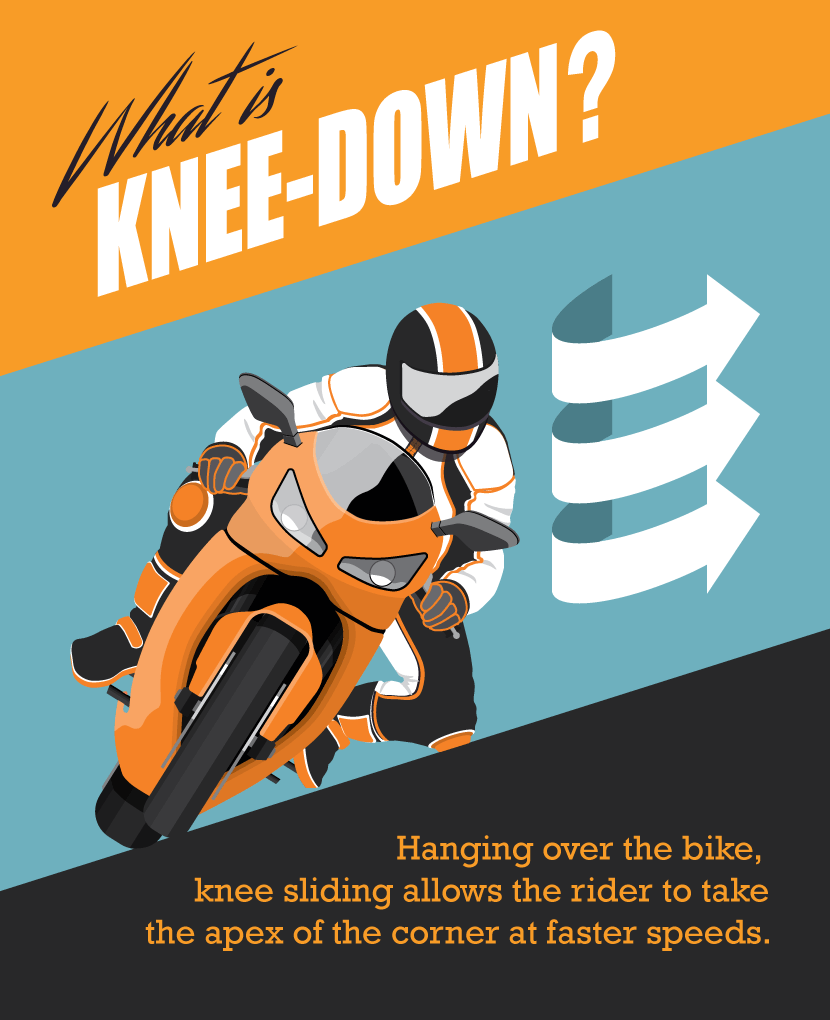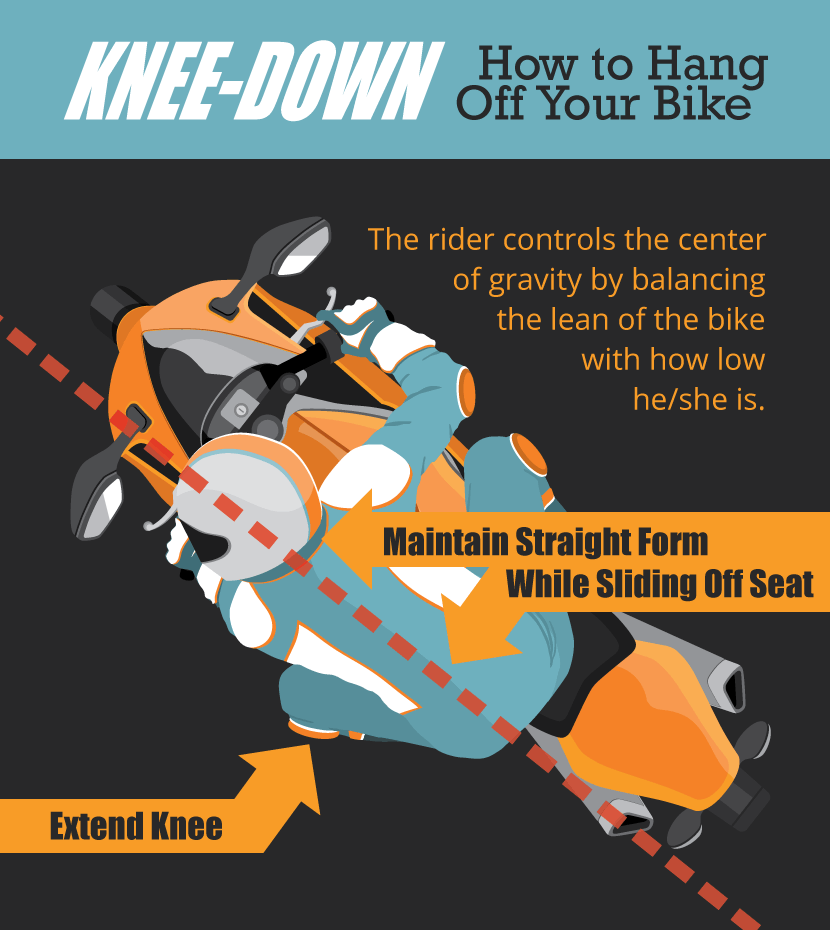GET 10% OFF
FOR SERVICING

Long before tires had the grip available today, a rider whose knee touched the ground was milliseconds away from crashing. But over the decades, as technology developed in both motorcycles and tires, it became possible for a good rider to lean over so far that a knee touched the ground.
In basic scientific terms, knee-down riding is a result of taking a bike to its maximum lean angle on a corner, in order to take the corner faster. This causes the rider to hang over the bike, with a knee touching the ground (we think it’s pretty cool, too).

History of Riding Styles
A few decades before it became the norm to use knee sliders when racing, it was considered untidy to have your knee out on a corner. The likes of 1960s multiple-world champion Mike Hailwood barely moved in the seat when leaning into a corner. But as more and more riders began to lean off their machines, a new style began to take over.
British motorcycle racing fans of the 70s will recall the unique style of Dave Croxford. He leaned so far off his bike that when he was viewed from the outside of a corner, only his leg was visible. Around this time was also when one of the most famous British riders, Barry Sheene, came out; he had his knee out so far on corners that he began to wear away the knees in his leathers. So began the trend to slide off the bike toward the inside of the corner – stick one’s knee out and drag the slider around the corner. Modern racers have taken this a step further and are now dragging their elbows!
How to Get Knee-Down
So how is this done? Needless to say, it is not a good idea to do this type of riding on the street. The best method of learning to use knee sliders is to attend a track day at your local race track. Track days cater to riders who want to take their machines beyond the legal limits of public roads. The track sessions are generally split into novice, intermediate, and expert levels, which gives the beginner a chance to learn properly, and acquire the necessary skill to use knee sliders.
Learning any new riding technique that involves higher-than-normal speeds is risky, and should be approached slowly.

The Concept
Initially, the rider will build up speed until sliding off the seat in the corner entry seems natural. The lower the rider hangs off the seat, the less need there is to lean the bike. This is because the center of gravity is lowered when the rider’s body drops to the side of the bike. It’s in this balance of leaning the bike and hanging off the side that higher corner speeds are controlled.
Braking Later
Increasing the corner speed will make it necessary to lean the bike over, but this must be done in gradual stages or there will be a lot more than the knee sliders making contact with the tarmac! The best way to increase the corner speed is to practice the same corner over and over, braking closer to the corner on each try. This is covered step by step below.
As the rider leans over more, the slider will touch down. The experience will be unnerving the first time, but as long as the rider maintains a steady posture and makes no sudden movements, the corner can be taken with ease.

Sighting Lap
Before getting close to higher speeds to try out those new knee sliders, all riders on track days should do at least one sighting lap. The objective of this lap is, as the name implies, to “sight” the track and accomplish the following:
- Warm up the tires and brakes
- Check for the position of rumble strips (see note below)
- Check for any oil dropped by previous riders
- Memorize run off areas (corners with no run off – grass – should be taken well within the rider’s/bike’s capabilities)
Knee-Down Learning Process
- Travel at high speed (145mph), sitting in the tucked position – typically below the fairing (shell) to reduce aerodynamic drag, heading towards the corner.
- At the 200-yard mark, sit up and apply the brakes hard, dropping your speed to where you feel comfortable cornering. This braking point and entry speed is safe enough for this theoretical corner and requires the bike to be leaned over moderately.
- As you lean the bike to corner, slide your body to the lower edge of the seat and bring your knee out.
- On the next lap, wait until the 150-yard maker before braking hard and repeating the same body movement. Due to the increased speed you must lean the bike a little further, and hang lower off the seat. You may get low enough for your knee slider to touch the ground at the apex of the corner.
- Finally, on the next lap, do not brake until just after the 150-yard marker. This has the effect of increasing your straight-line speed, requiring the bike to be leaned over slightly more. Again, the effect is to bring your knee slider into contact with the ground for a few yards before and after the corner apex.
Notes:
- Most race tracks have marker boards before corners, for riders and drivers to use as brake reference points – only use fixed marker points like these.
- Many race tracks have ‘rumble strips’ (raised corner edges often made from concrete and brightly colored). These raised corner edges were generally put in place to stop race car drivers cutting the corner. As these rumble strips differ from track to track (sometimes from corner to corner on the same track), the rider must inspect them before any hot laps are attempted. You can do this during the sighting lap (described above). Hitting a rumble strip with a knee slider can cause a crash, and professional riders often lift the knee momentarily when nearing the rumble strips.
- Dragging elbow sliders is only done by some of the world’s best MotoGP™ riders. It should be noted that the ability to do this is somewhat dependent on the rider’s shape. A rider with a small body will not touch the ground even at the same corner speed, on the same bike or at the same lean angle as a larger one (see film of Marc Marquez and Dani Pedrosa, for example).
- During track days, all of the riders will attend a morning briefing to warn about the potential dangers while riding on a racetrack. It’s particularly important to stick to a chosen line, since a following rider may be about to pass at considerably higher speeds.

